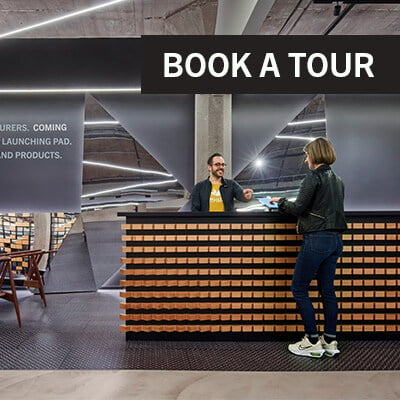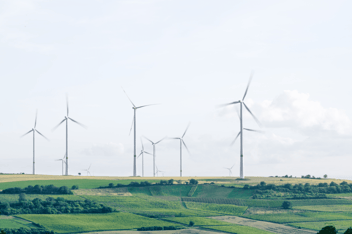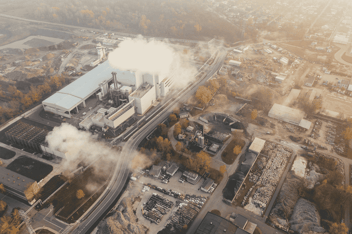In just the last few years, we have seen a pandemic disrupt global supply chains, a shortage in raw materials, a war catapult energy prices and scarcity, and the global impacts of climate change.
Experts across disciplines agree that we haven’t seen the highest pressures of a climate crisis yet. What is worrisome, is that research from WEF, EY, CapGemini, Gartner, and others show that very few companies are prepared for disruption in the next three years.
Take burning oil rigs as an example; while the carbon dioxide emissions alone prompt enough of an emergency response, solutions tend to be short-term and siloed. Workers find their day-to-day entrenched in solving crises, while companies face the inevitability of repeat incidents in the future.
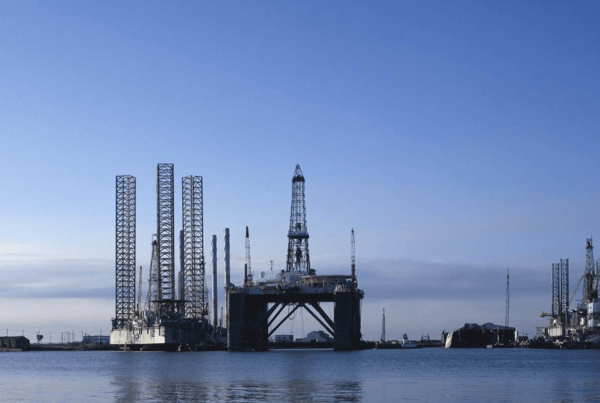
Although challenging, there are opportunities for us all to take a concerted and holistic approach to solving these issues hand in hand, making changes now to impact tomorrow. With smart technologies, shared platforms, and collaboration, we can build a flexible muscle to help us weather future storms, a muscle that offers flexibility, agility, sustainability, and resiliency.
Some opportunities include having employees and partners with the same mindset and behaviors, and iterating products, services, and processes with sustainability and resiliency in mind– not as a cost center, but as a source of new, additional revenue.
It is becoming very clear for companies that solutions for climate change, energy independence, supply chain continuity, and smart and sustainable manufacturing must be intimately linked.
In its journey to reach net-zero carbon emissions by 2040, Amazon’s total carbon footprint grew by 18% last year, from 60M metric tons to 71M metric tons. And despite all notable actions — renewable energy investments, sustainable construction, electric vehicle purchases, improved packaging — the tech conglomerate’s emissions relative to gross merchandise sales only declined 1.9% in 2021.
True progress still requires many iterations of technological advancement throughout the whole supply and logistics chain.
The move to smart and sustainable manufacturing
To avoid disruptions in global supply chains, companies are considering moving away from outsourcing to low-cost countries and towards a more regional manufacturing approach. Smart and sustainable manufacturing technologies, such as sensors and robots, allow factories to be established in traditionally higher cost countries, increase efficiency and productivity, while also improving operators’ safety in plants.
The Wall Street Journal reports that according to the Association for Advancing Automation, manufacturers are introducing more and more manufacturing and warehouse robots than ever because they are failing to find new workers, squashing worries of robots and machine automations taking jobs away from the people.
Sustainable technologies also rethink processes to become more energy efficient and reduce greenhouse gas emissions. Introducing more energy efficient production and manufacturing processes is one area. Another is locating factories near to key markets that put assembly lines closer to the customer. It also allows us to rethink logistics throughout the supply chain: the transport modus (air, sea, and road choices that avoid known log jams) but also fuel choices to minimize environmental impact (electric or hydrogen fueled vehicles).
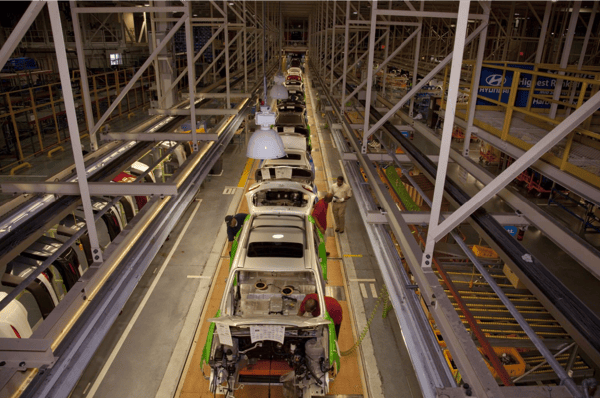
Both the move towards smart sustainable manufacturing and smart sustainable supply chains will allow companies to have a better grip on the carbon production in their supply chain – the so-called scope 3 emissions. Whereas scope 1 emissions (the emissions caused by a company’s own production) are typically easy to account for, scope 3 are the emissions produced by suppliers.
The challenge is one of visibility and transparency of suppliers’ carbon emissions numbers. Carbon Trust research shows that Scope 3 emissions represent between 65 percent to 95 percent of most companies’ carbon impact. So, saying you are net-zero on scope 1 doesn’t mean much if your scope 3 isn’t under control.
The trend toward supply chain decarbonization is clear. Across industries, companies are already setting bold scope 3 decarbonization targets. Such targets can save companies from being forced to make sudden, more expensive adjustments in the future when regulators tighten environmental standards. By implementing a net-zero supply chain, companies can amplify their climate impact, enable emission reductions in hard-to-abate sectors, and accelerate climate action in countries where it would otherwise not be high on the agenda.
Steps towards sustainable and resilient operation
When working on holistic solutions addressing climate change, manufacturing, and supply chain issues, resiliency is key.
Resiliency, the ability to adapt to change by relying on core strength, can be found in a company’s core values as much as it can its technology. Resiliency is that strong, flexible muscle that permits a willingness to take risks and experience failure. It also helps one know when to change course, or bounce back from a challenge, overcome an obstacle, and adapt to new circumstances. As Nelson Mandela put it, “Do not judge me by my successes, judge me by how many times I fell down and got back up again.”
Resiliency begins with visibility. Having broad and real-time visibility allows for the development of resilient and sustainable sourcing. But what is not measured cannot be managed. Start with the visibility of one’s own manufacturing and operations and expand to the full value chain and supply chain. Review the carbon footprint of every partner and supplier in your ecosystem—the Securities and Exchange Commission (SEC) and society at large already are.
Measure to minimize the impact of constraints: measurements need to go above and beyond the traditional end-to-end cost and performance. If we learned something about uncertainty in the previous years, it is the need to minimize constraints to prevent catastrophic impact of disruption and build contingency plans in case of disruption. The opportunity here is to rethink supply chains, not by just adding sustainability as an after-thought, but to rethink holistically to create more value.
Today, companies are implementing well-known traits of supply chain resiliency: diversification of sourcing across suppliers as well as logistics, segmentation of the supply chain, localization or regionalization, inventory and capacity buffers, and securing resources for core products. Resiliency focused on minimizing constraints can only be obtained with visibility into the global ecosystem, and that is only possible through shared platforms using the latest technologies.

Embrace technology to make manufacturing and supply chains smarter and more sustainable. This is not just about digitalizing current processes – take the opportunity to rethink the process to create more value. The design phase of a product is the most powerful and cost-efficient point of impact. Design products and services with sustainability in mind, use machine learning for forecasting in planning the supply chain, use digital twinning to introduce new technology in processes, and validate step-by-step in a frugal manner.
Shared platforms among stakeholders will increase collaboration and provide the necessary data to make informed decisions. If available, take the learnings from your internal data platform to build the shared one. Take this as an opportunity to rethink your supply chain strategy. It provides access to data from local networks, allows one to benchmark operations, identify pain points, and more. Digital technologies such as integrated dashboards underpinned by blockchain and industrial IoT bring real-time visibility and transparency. That data will allow for reporting progress to all stakeholders on operations, risk, financials, sustainability (traceability), and social justice for operational, investor, and regulatory scrutiny.
The platform must also identify the carbon hot spots and pain points. This allows partners to build a decarbonization roadmap towards net-zero (or even net positive) with opportunity to introduce less carbon generating technologies in your manufacturing and supply chain, decarbonization technologies, circular technologies reducing waste, and mitigating mineral extraction where possible. McKinsey’s research reports that decarbonized supply chains are ultimately more resilient supply chains—and may even unlock the way to cheaper supply chains in the coming years.
Since not everybody can be on the same platform – the platform industry is booming – key is to make sure the platforms are interoperable to provide transparency and traceability.
Collaboration is essential: the carbon pain points and gaps identified in suppliers through a shared data platform should be addressed in an ecosystem framework. This will allow suppliers to transform with you to become sustainable and net-zero. Suppliers can be given incentives in various forms: sustainable financing, up-skilling their workforce, awards, and more.
This ecosystem visibility will allow for the introduction of new business models. Research by BCG shows that companies on their own frequently run into constraints within the wider system. According to EY, leading COOs are making the leap from linear supply chains to agile networked ecosystems. As explained in my previous article, collective action (partnerships, JVs, alliances, or ecosystems) can be particularly helpful in removing the constraints that limit the adoption of more sustainable business practices. Technology won’t be able to solve everything – geopolitical events happen but networked ecosystems allow a network to continue operations if one node falls out.
Purposeful leadership drives the whole organization and ecosystem – it sets the mindset. We need ‘everyday climate leaders’ who can turn commitments into action; brave individuals who will face the inevitable challenges and seize opportunities to make change happen. Call it moral leadership, both in their own organizations as well as with their stakeholders and the ecosystems they operate in. Having the CEO at the table with regulators, lawmakers, suppliers, and other CEOs, sends a powerful message.
Build a resilient workforce. Employees need to feel good about where they work and confident in their contribution. They need to feel they have the power to change the world, that building a sustainable and decarbonized world will depend on their day-by-day operation– brave individuals who won’t be able to rely on a clear money or carbon business case but running small experiments to learn. This requires some digital fluency and familiarity with information and processes that may not come naturally to traditionally trained workers.
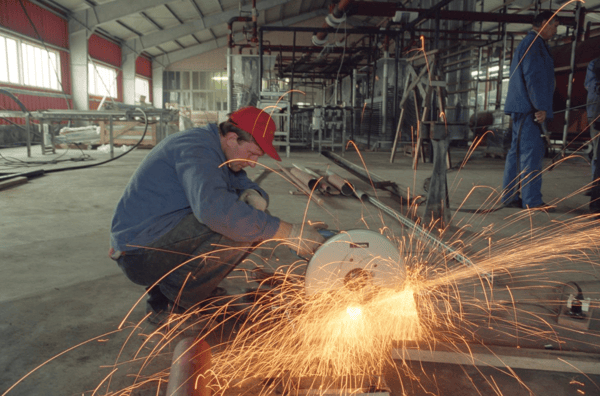
This is a huge transformation and needs to happen in small steps. Research from PWC shows that 80% of supply chain experts surveyed report that tech investments haven’t delivered according to expectations. Transformation is difficult– the key is to have transformation aligned with strategy, requiring the right mindset, and driven by the top. And you can’t do it alone, so work with those that have the capabilities.
While the pandemic and the war have shown how vulnerable our global systems are, it has shown that we can mobilize the necessary resources to correct and, in some cases, accelerate timelines. However, we need to approach this holistically and build the foundation for a smart and sustainable future in a collaborative way. Smartness through digitalization, sustainability through decarbonization, collaboration through shared platforms—and perhaps the most important: the right mindset.
Interested in exploring the collaborative value-chain between early-stage innovators and industry leaders commercializing new products and solutions? Learn more about mHUB Corporate Innovation.

